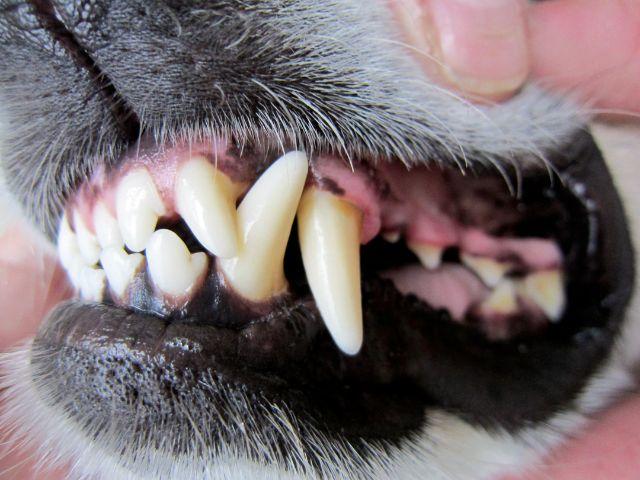
According to the American Veterinary Dental Society, oral disease is the number one health problem diagnosed in dogs and cats. By the time they are 3 years old, 80 percent of dogs and 70 percent of cats have oral disease if they don’t receive proper dental care. Yet only 3 percent of dogs and 1 percent of cats get the treatment they need. Because all pets are at risk for developing dental problems, it is important to check your pet’s mouth and teeth for the following warning signs of dental disease:
- Bad breath
- Tartar buildup
- Swollen or bleeding gums
- Nasal discharge
- Change in eating habits – not eating, or dropping food, for example
- Facial swelling
Since your pet cannot take care of his or her own teeth, you as a pet owner can help prevent dental disease by getting professional care from your veterinarian as well as by providing dental care at home. At OMVC, we recommend that your pet have, at minimum, a yearly dental exam and cleaning, depending on the condition of his or her teeth.
What happens to my pet during a dental cleaning?
At OMVC a proper dental cleaning begins with a thorough physical exam, pre-anaesthetic bloodwork and a thorough consult with the client so they understand what teeth may be extracted and what to expect after the procedure. Prior to induction of anesthesia the pet is placed on intravenous fluids and analgesic and antibiotic injections are given. The pet is then placed under general anesthesia. Throughout the procedure the veterinary technician is monitoring heart rate, blood pressure, body temperature and oxygenation of the blood. The teeth are thoroughly cleaned with an ultrasonic scaler, all teeth are examined for gingival pockets. Any teeth that need extraction are removed by the veterinarian. Local dental blocs are done to reduce pain. When needed absorbable sutures are placed at the site of tooth extraction. Teeth are then polished and a fluoride treatment is also performed on all remaining teeth to further prevent tartar buildup. Pets are supervised closely during recovery in order that they wake up smoothly and are alert and able to stand on their own. Pain medications and antibiotics are routinely sent home with the owner with written instructions on how to care for their pet after a good dental cleaning.
There are many oral cleaning products designed exclusively for pet use—talk to a staff member about which products would be appropriate for your pet. Daily brushing of your pets’ teeth will minimize plaque build-up. Antiseptic oral rinses will help protect against bacterial overgrowth in your pet’s mouth. Dental diets and specially formulated chew treats will also help to keep the teeth healthy in between visits to our hospital.
Proper dental care is critical to a pet’s overall health. Bacteria from periodontal disease, if left untreated, can travel through the bloodstream and damage internal organs including the heart, liver and kidney. Keeping your pet’s teeth healthy can greatly increase their quality of life and the number of years you have to spend with your pet.

